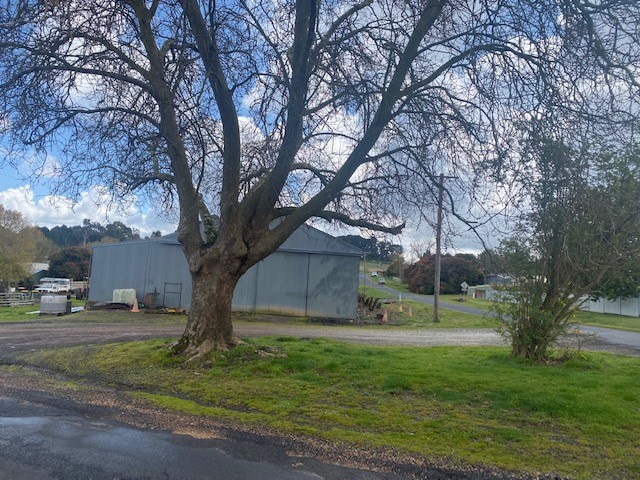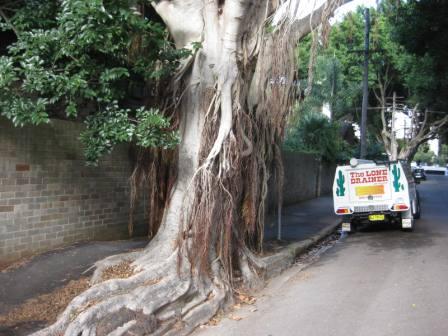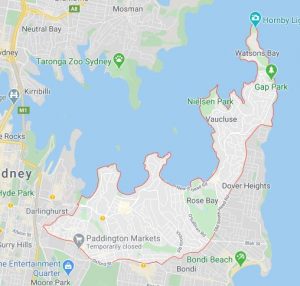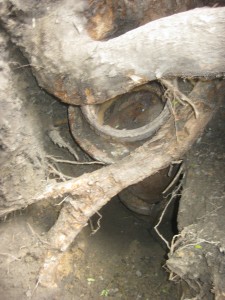Archives
Do deciduous tree roots block drains in winter?
Following on from our previous post, Do tree roots grow in sewer pipes during winter, deciduous trees that shed their leaves during the autumn, generally follow a similar pattern in terms of root growth during winter. However, there are a few additional factors to consider.
Deciduous trees undergo physiological changes in preparation for winter. As the days shorten and temperatures drop, they enter a period of dormancy. During this dormancy phase, metabolic activity slows down, including root growth. Deciduous trees allocate their energy resources towards survival mechanisms and protecting themselves from the cold rather than active growth.

One significant difference with deciduous trees is that they shed their leaves in the autumn. This leaf drop allows the tree to conserve water and energy during winter when resources are limited. Without leaves, the tree doesn’t require as much water and nutrients, reducing the demand on the roots during the dormant period.
While root growth is generally slower or dormant during winter for deciduous trees, some root activity may still occur. Roots continue to function for basic water and nutrient uptake, albeit at a reduced rate compared to the active growing season. According to the arborists I’ve spoken with, the majority of root growth for deciduous trees resumes in the spring, coinciding with the growth of new leaves and the tree’s transition out of dormancy.
So, while there may be slight variations due to leaf drop and dormancy, the overall pattern of reduced root growth during winter applies to both deciduous and evergreen trees.
But remember, tree roots from deciduous trees will still block your drains and if they do, we can help!
Are you buying a house on a tree lined street? Six things to consider!
If you have your eye on a house in a tree lined street, you should read this!
While street trees can have many benefits, there are also some potential negative impacts that should be considered.
- Damage to the street infrastructure: Street trees can cause damage to footpaths, roads, and buildings if their roots grow too close to or under them. They can also damage underground utilities such as electrical cables, water and gas pipes. The tree root systems will also cause blocked drains and sewer pipes. If you get a blocked drain you should call The Lone Drainer and Pronto.
- Maintenance: Street trees require regular maintenance, such as pruning and watering, to ensure they remain healthy and safe. This can be a significant cost for utility companies, municipalities and homeowners. Radical pruning is used to shape the street trees away from overhead electric power and communication lines.
- Allergies: Some people may have an allergic reaction to certain species of street trees, such as those that produce a lot of pollen.
- Invasive species: Some species of street trees can become invasive, meaning they can spread rapidly and compete with the native species. This can have a negative impact on local ecosystems and biodiversity.
- Canopy closure: Street trees can cause a canopy closure, blocking the sunlight and view, making the street darker and less attractive in the winter months. However, in our hot summer, the shade they provide brings a welcome relief from the heat of the day.
- Your car: Parking your car under a tree like this Hill’s Weeping Fig Ficus microcarpa hillii during certain seasons can be very messy. The fig has berries….. Lots of them. They attract possums, flying foxes and birds that feast on the berries and subsequently make a BIG mess on your car.
It’s important to consider these potential negative impacts when selecting, planting, and maintaining street trees. Proper tree selection, planning, and management can help to minimize these negative impacts and maximize the benefits of street trees.

Five ways street trees affect your home!
If you’re considering buying a home in a tree lined street like this, you need to know how trees can affect houses on the street. Here’s just a few,
-
Property value: Street trees can have a positive impact on property values. Studies have shown that houses with street trees have a higher market value than houses without street trees.
-
Energy efficiency: Street trees can help to reduce energy costs by providing shade and reducing the amount of heat absorbed by houses. This can help to keep houses cooler in the summer and reduce the need for air conditioning.
-
Aesthetics: Street trees can enhance the appearance of a street and contribute to a more pleasant and inviting neighborhood.
-
Environmental benefits: Street trees can help to improve air and water quality, reduce storm water runoff, and provide habitat for wildlife.
- Some species can grow too large and cause damage to the roads, footpaths and sewers and storm water drains of houses or businesses on the street.
It’s important to note that while street trees have many benefits, they also require maintenance and care to ensure they are healthy and safe.
In Sydney Australia, local Councils as the owners, are responsible for maintaining the street trees on their property, including pruning, watering and removing dead branches or fallen leaves, and the maintenance of the blocked drains they cause.
It’s important they select the right species of tree for the location and space available, as some species can grow too large and cause damage to the roads, footpaths and sewers and storm water drains of houses or businesses on the street.
Read our previous posts about street trees and how blocked drains are managed by Randwick Council, Waverley Council and Woollahra Council here.

Stop Tree Roots in PVC pipes
Bellevue Hill, Sydney, Australia
This post is a simple one. The house shown here is quite new!
The sewer pipes are also new PVC. But, where the house sewer line joins into the Sydney Water sewer main there are roots from a large Fig tree on the footpath out the front growing into the sewer connection.
We are putting Vaporooter into the pipes to stop tree root regrowth at that single point.
It’s a simple process and I hope you have seen it before.
You can see our equipment on the rock shelf behind and also see the Vaporooter foam coming up through the cap in the footpath.
Even new houses with PVC pipes can get tree roots growing into them.
There is a simple way to Stop tree roots in Drains. It’s Vaporooter!
If you need to find out more about it, Ask me.
Call 1800 637 600
Contact The Lone Drainer and Pronto 02 9664 4990
Or check out VaporooterAustralia.com.au
How to Stop a Blocked drain in Coogee
Vaporooter Stops Tree roots in Drains
Hi, It’s Dave Conroy here from The Lone Drainer and Pronto.
I am in Coogee today and we are applying Vaporooter to a house in this tree- lined street. The people who own this house have had problems with their sewer.
Tree roots from this Hills weeping fig (ficus microcarpa) have been growing in their clay sewer pipes for over 10 years and we had been clearing blockages regularly.
We have been applying Vaporooter in those same pipes now for about four years and they haven’t had a blocked drain since. Those are great results!
If you live in a street similar to this, where there is a beautiful canopy above but underground, the tree roots are getting into your sewer pipes, then you should consider Vaporooter to Stop tree roots in your drains.
If you would like to find out about Vaporooter, call me on Sydney 02 9664 4990.
Woollahra Council trees are blocking my drains
Many of the blocked drains we attend to are caused by the trees that line the streets managed by Woollahra Council.
At street level, the trees’ canopy brings summer shade and all kinds of birdlife.
Contrary to belief, tree roots don’t go in search of water. They are stimulated as moisture levels, and the surrounding soil temperature reaches a point that is appealing to them.

Sydney suburbs managed by Woollahra Council: Bellevue Hill, Darling Point, Double Bay, Edgecliff, Paddington, Point Piper, Rose Bay, Vaucluse
In most circumstances, the tree roots enter through leaking pipe joints and damage the sewer drains and stormwater pipes that take wastewater off your property. Many homeowners hold Woollahra Council responsible for their blockage and expect they will clear their blocked drains for free because the Council own the trees.
Well, in some cases they do!
But, Woollahra Council gets their income from you the ratepayer, and as you would expect, they have guidelines for spending ratepayers money to fix your blocked drains.
If you live in one of the suburbs managed by Woollahra Council, click here to see the Woollahra Council Wastewater Policy.
The top points are that you the homeowner:
Must have a sewer service diagram for your home.
Must maintain your sewer pipes.
Must prevent sewer blockages.
Must prevent sewerage from escaping into the environment.
May be entitled to the Council plumber clearing your blocked drain.
Waverley Council trees are blocking my drains
Did you know 85% of blocked drains are caused by tree roots?
In Waverley Council’s jurisdiction, blocked drains are cause quite often by the roots of the trees that line the streets.

They can block drains and sometimes damage the sewer and stormwater pipes that take wastewater off your property.
Many homeowners hold Waverley Council responsible for their blockage and expect they will clear their blocked drains for free because they own the trees.
Well in some cases they do!
But, Waverley Council gets their income from you the ratepayer and as you would expect, they have guidelines for spending ratepayers money to fix your blocked drains.
If you have a Blocked drain and live in one of these suburbs managed by Waverley Council including Bondi, Bondi Beach, Bondi Junction, Bronte, Charing Cross, Clovelly, Dover Heights, North Bondi, Queens Park and Waverley, click here to see the Waverley Council Sewerage Stormwater Drain Blockage Policy.
The top points are that you the homeowner:
Must have a sewer service diagram for your building.
Must maintain your sewer pipes.
Must prevent sewer blockages.
Must prevent sewerage from escaping into the environment.
May be entitled to the Council plumber clearing your blocked drain.
Randwick Council trees are blocking my drains
Blocked drains are a large part of our workday; every day! And 85% of blocked drains are caused by tree roots. Our home is Coogee Randwick, in the eastern suburbs of Sydney Australia.

Tree-lined streets in Randwick Council are the reason for a lot of the blocked drains that we attend to. They damage the sewer drains and stormwater pipes that take wastewater off your property.
Many homeowners hold the council responsible for their blockage and have expectations that the council will clear their blocked drains for free because they own the trees.
Well in some cases they do.
But, Randwick Council gets their income from you the ratepayer and as you’d expect they have guidelines for spending ratepayers money to fix your blocked drains.
If you live in one of these Sydney suburbs managed by Randwick Council including Centennial Park, Chifley, Coogee, Kensington, Kingsford, Little Bay, Malabar, Maroubra, Matraville, Pagewood, Phillip Bay, Port Botany and Randwick, click here to see Randwick Council Sewerage Stormwater Drain Blockage Policy.
The top points are that you the homeowner:
- Must have a sewer service diagram for your home
- Must maintain your sewer pipes.
- Must prevent sewer blockages
- Must prevent sewerage from escaping into the environment
- Maybe entitled to the Council plumber clearing your blocked drain
Blocked Pipes and Council Trees
Did you know many blocked sewers are caused by the tree roots from Council street trees?
 This issue is becoming a very big drain on the budget of many local councils.
This issue is becoming a very big drain on the budget of many local councils.
The council owned trees that make some of our more sought after suburban streets very special, are creating havoc underground by repeatedly blocking the sewer pipelines from many of the homes on those streets. Councils are fighting a losing battle trying to bring the tree roots under control.
The budgets of many local councils are strained as they just can’t keep up with the demand of their ratepayers to attend to sewer blockages caused by these street trees.
There is an economical way for local councils to Stop Tree Roots in Pipes and ease the burden on the budget and the ratepayers who have regular tree root blockages.
Vaporooter Kills Roots. Period!
